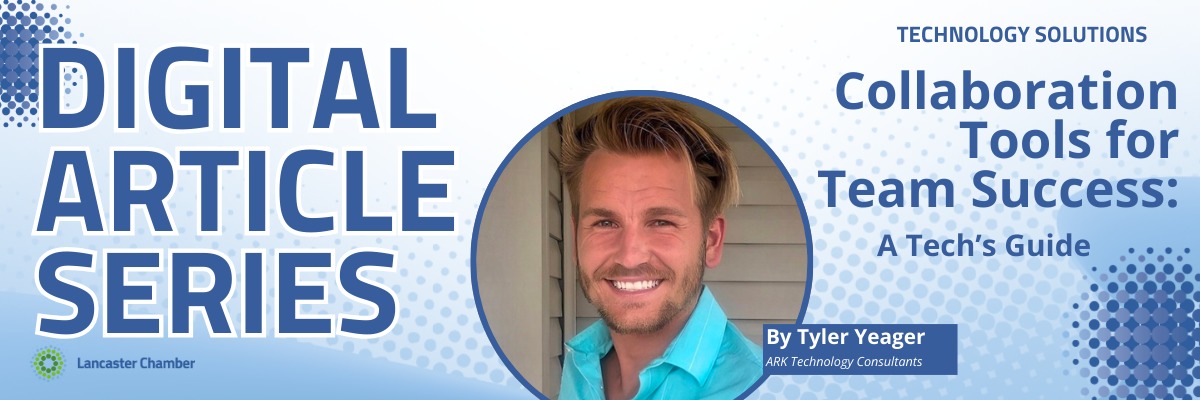By Tyler Yeager – A feature piece from our Fall-Winter 2023 issue of the Lancaster Thriving Publication!
Effective collaboration between teams is not just beneficial, it’s crucial. Business leaders face the challenge of optimizing workforce efficiency in a world that has dramatically changed these last three years. Today’s environment must be flexible and adaptable for internal team collaboration, as well as client collaboration. To help achieve this, there are numerous technology products to support the integration of a hybrid workforce that keeps groups connected, while increasing productivity.
Since most businesses are using M365 to some capacity, it is important to highlight a few options that are available and how to leverage those resources to boost your organization’s collaboration. These tools are typically included in your current licensing structure, eliminating the need for additional expenditures, and creating cost-effectiveness for your organization.
Microsoft Teams is at the forefront of M365’s collaborative tools. It serves as the centralized hub for team communication, bringing together chat, video conferencing, file sharing, and project management. With Teams, your team can create dedicated channels for specific projects or topics, facilitating focused discussions and easy document sharing. Features like real-time co-authoring and integrations with other M365 apps ensure seamless collaboration.
SharePoint is widely recognized for its robust capabilities in document storage, management, and seamless sharing across devices and applications. Beyond its document-centric utility, SharePoint serves as a pivotal platform for the development of internal websites and intranets, promoting internal communication, collaborative efforts, and information awareness. This provides employees with a dedicated portal for timely updates, communication, and important information, accessible from any location, at any time, creating a more efficient and responsive work environment.
Microsoft Planner seamlessly integrates with SharePoint, enabling users to generate and delegate tasks, categorize them into well-organized buckets, and accurately track progress using interactive charts and dashboards. This integration creates a consolidated workspace, fostering project continuity and assuring each team member remains informed and aligned with their respective responsibilities.
Yammer serves as the internal social media platform for your organization, facilitating seamless company-wide communication, updates, and collaborative efforts. This platform empowers employees to expedite problem-solving and access information expeditiously by leveraging the collective knowledge and expertise of their colleagues. For instance, an employee can initiate a query within a Yammer group dedicated to their department, project, or area of interest, and receive insightful responses. This exchange of knowledge adds to a more informed and agile workforce.
These are only a fraction of the potential opportunities for enhancing workforce collaboration. Conducting a comprehensive assessment of owned resources is the first step for identifying ways to leverage and optimize your existing tech stack. Ultimately, the primary objective is to maximize efficiency and productivity—a principle represented by the motto; “Do More With Less!”
Tyler Yeager, ARK Technology Consultants
not secure

